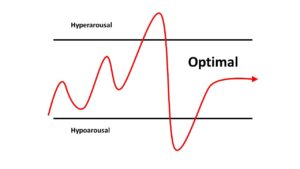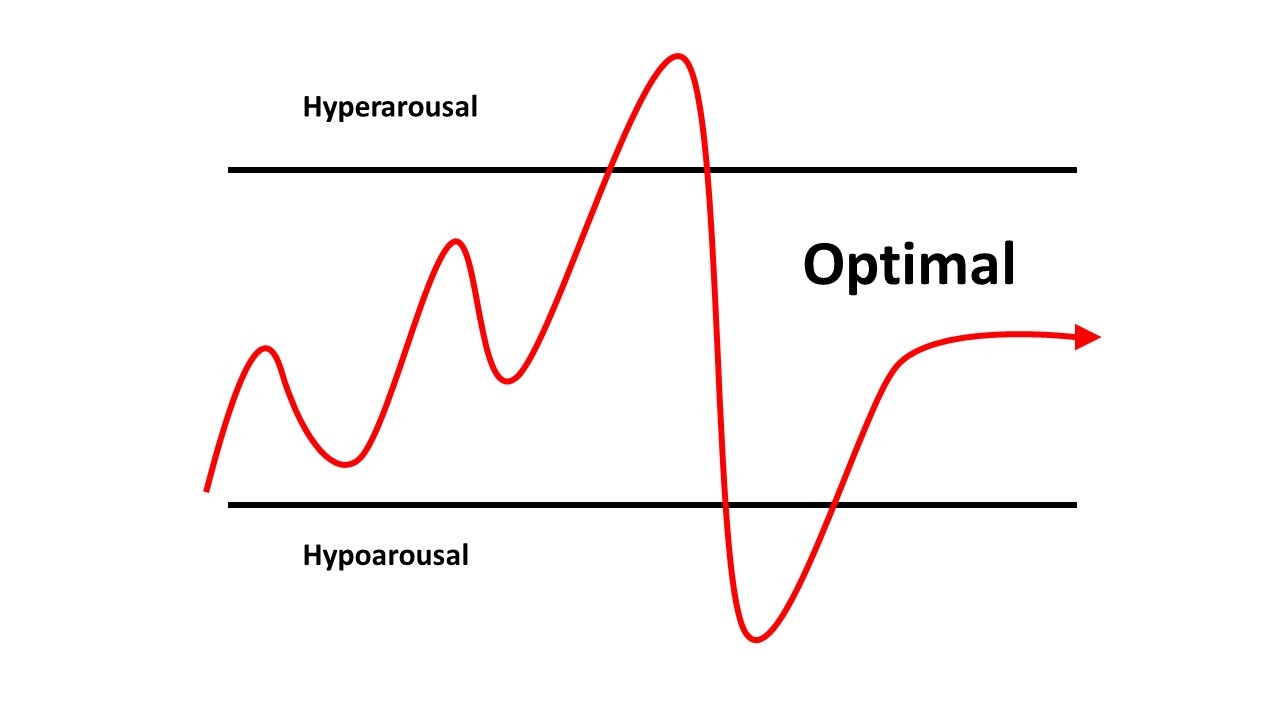Many of us are indeed creatures of habit. We do what we like, and like what we do. It’s as simple as that. Or is it? There is a large and growing body of research about how we are drawn to similarity, and rebuff (for the most part) that which is different or contrary.
We are pattern seekers. We generally like structure and routine, and do not like deviation from the norm. There is a comfortable range in which we endure fluctuations and thrive. This range is referred to our “Window of Tolerance” as named by Daniel Seigel MD illustrated below.
We can therefore safely say that one of the most common stressors we experience is that of “change,” especially change that affects our range of tolerance or homeostasis. Any change can throw us for a loop when it is not anticipated. Simple things such as; 1) having to change clothes after a spill, 2) a traffic diversion on the way to work, and/or 3) learning a planned and prepared for event can’t take place to name a few, are examples of circumstances, that can nudge or even knock us outside of that window of tolerance range. These are examples of what I would call incidental change events that may trigger a stress response.
Other more pronounced changes can be even more challenging to our sense of normalcy or routine. I refer to these as structural change events. These can be either temporary or permanent in nature. Things such as relationship changes, employment situation changes, work-expectation or responsibility changes, residential relocations each can also result in moving us outside our window of tolerance.
In cases of people with previously experienced trauma, the results are less that of moving them outside that window, but rather a shrinking of that window of tolerance altogether. When previous trauma or traumatic memories result in an inability to remain in the present because the memories are too intrusive, professional help may be necessary.
Operating within our window of tolerance & thriving is possible when we are aware of & Recognize our stress triggers such as the changes discussed here to name just a few. We can then Reframe them, Reduce them where possible, Reflect on our tolerance, and Restore our energy levels.
We must Self-Regulate within that Window. Cognitive Dynamics can help by introducing you to Self-Reg© so you can see things differently.


![The Art and Science of Confabulation vs. Lying [2025-07]](https://cognitivedynamics.ca/wp-content/uploads/2025/07/2025-07-Lying-v-Confabulating-child-in-distress-500x383.jpg)
![The Art and Science of Good Stress vs. Bad Stress [2025-06]](https://cognitivedynamics.ca/wp-content/uploads/2025/07/2025-06-Stress-Continuum-Yerkes-Dodson-500x383.png)
![The Art and Science of Healing the Divide [2025-05]](https://cognitivedynamics.ca/wp-content/uploads/2025/07/Healing-the-Divide-1-500x383.jpg)
![The Art and Science of Relationship Importance [2025-04]](https://cognitivedynamics.ca/wp-content/uploads/2025/07/Relationship-Importance-1-500x383.jpg)
Leave A Comment